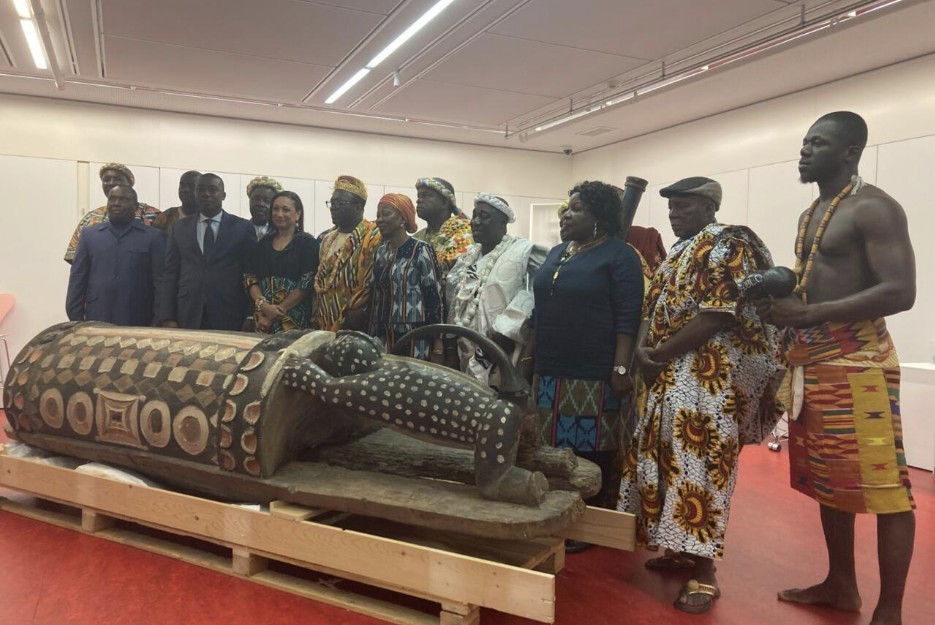Preserving Chinatown's Cultural Soul
- Paolo San Jose
- Apr 17
- 4 min read

In Sydney’s Chinatown, the sharp smells of Chinese cuisine meld with the hustle and bustle of its historic streets. Chinatown’s trademark red gates witness around three million visitors each year, each seeking to experience the diversity of authentic Chinese food and culture.
Indeed, Sydney’s Chinatown has for decades been a window to Chinese culture, but many fear that this window is at risk of losing its authenticity.
Origins
Chinatown has long served as the socio-economic centre for Sydney’s Chinese community, whose origins can be traced back to 1818. Many Chinese immigrants initially settled in Surry Hills to take advantage of the suburb’s low cost of living. Chinese traders operated their businesses around the harbour, gradually forming the Chinatown where it now stands at Haymarket, stretching through Hay Street, DIxon Street, and Goulburn Street.
By the 1920s, the area had developed into a community hub. It was a place to buy and sell imported Chinese goods, play mahjong, and practice their cultural way of life, providing the Chinese-Australian community a vital refuge from the racial discrimination of the White Australian policies. Before it was officially termed ‘Chinatown,’ up to a third of Chinese migrants in Australia lived in the Chinatown area.
The end of the White Australia Policy in 1973 marked the beginning of Sydney’s Chinatown as a tourist site, with its iconic red ceremonial gates erected in 1980. As many of its Chinese residents relocated to more suburban areas, tourism has become a primary factor in fuelling the area’s foot traffic. In fact, 43 per cent of foreign tourists in Sydney visited Chinatown in 2023.
Regardless, Chinatown has deep roots as the cultural home of Sydney’s Chinese community. It has been the site of various long-running family-owned institutions, and indeed housed much of the Chinese-Australian community’s heritage, both tangible and intangible. However, the preservation of Chinatown’s historical and cultural foundations has faced several challenges in the recent decade.
Decline
The construction of the light rail in Haymarket in the late 2010s significantly altered its accessibility, decreasing foot traffic to the local area. However, the COVID pandemic posed its most significant challenge. As business operations grinded to a halt, many of Chinatown’s well-established restaurants were forced to close permanently.
Among these institutions were Marigold, well-known for its 7-day yum cha service, and BBQ King, famed for its peking duck. Both these restaurants were a mainstay of Chinatown’s food scene for more than 40 years. Due to these closures, vacant shopfronts, ‘for lease’ signs, and dingy restaurants became a regularity.
While economic activity and foot traffic have indeed recovered post-pandemic, many feel that its cultural authenticity has been eroded. What was once the home of historic and family-owned establishments had been replaced by commercial restaurant chains. Take a quick stroll through Dixon Street, and you’ll find multiple bubble tea spots, hotpot franchises, and Asian dessert chains. While many have welcomed the growing commercialisation of Chinatown’s food scene, others, like restaurateur Howin Chui, believe that these franchises aren’t authentic, and are ‘not part of the culture of Sydney’s Chinatown.’
Chinatown’s Re-Rise
The increase in migration in the past two decades has seen Sydney’s Chinatown evolve from an exclusively Chinese area, to a more pan-Asian multicultural hub. Plans to redevelop Chinatown over the years have involved a challenge to retain the area’s history of Chinese settlement. Currently, no museum or cultural centre has been established to preserve Chinatown’s significant past. However, there have been notable success stories in efforts to preserve Chinatown’s heritage.
Take the Kwong War Chun Building in Dixon Street, one of the earliest Chinese land acquisitions in Australia. It was the former site of its namesake trading company, tracing back to 1910 when the company’s owner, Philip Lum Chun Lee, purchased the building. The business sold imported Chinese goods, provided remittance services for Chinese immigrants, and eventually hosted social gatherings, becoming a vital socio-cultural institution for the Chinese community. By the time the building was sold to a developer in 2017, the site had been left unused for years. While its buyer had planned to demolish and redevelop the site, an independent heritage assessment of the building found that the site held significant cultural value beyond the local level. Consequently, the building received permanent heritage listing from the NSW heritage ministry.
Chinatown is currently undergoing a $44 million revitalisation project, informed by a community survey which received more than one thousand responses. The City of Sydney plans to transform Chinatown into the centre for Asian nighttime outdoor dining. The recently opened 7-day Hay Street Food Market within the Paddy’s Market precinct is one of a number of new projects that seeks to breathe new life to the area.
Chinatown’s evolution is inevitable. Chinatown is becoming a window to not just Chinese culture, but the culture of Asia at large. Importantly, however, its evolution must not wipe away its vital cultural heritage and historical significance.
References





Comments